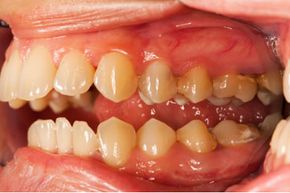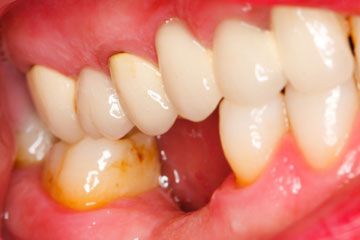Maybe you have a toothy grin. Maybe it's slyly crooked or shows off your pearly whites or your bright red gums ... wait, bright red gums? Bright red, shiny gums, swollen gums, gums that are tender when you touch them, bleeding gums and mouth sores are all symptoms of gingivitis, not of a pretty smile. And if these symptoms are left untreated, they can lead to tooth loss.
Gingivitis is an early stage of periodontal disease, an inflammation and infection of the gums. The number of Americans living with some form of periodontal disease is fairly substantial -- it's estimated that about 75 percent of us have a form of periodontal disease, though many aren't aware of it [source: University of Maryland Medical Center].
Advertisement
Gingivitis, specifically, is most common in the mouths of people in their 30s and older, but may begin as early as adolescence. The most common cause? Plaque. Plaque is a mixture of food debris, mucus and bacteria. Allowing plaque and tartar to build up long term on teeth irritates the gums, and the bacteria in plaque begins to produce toxins that cause the gums to become inflamed and infected.
Your risk of developing gingivitis and other periodontal diseases increases if any of these statements apply to you:
- You have poor oral hygiene habits (both brushing and flossing are important).
- You use tobacco products.
- You have a poor diet or are malnourished.
- You have diabetes or an illness that decreases your immune system function (such as HIV or cancer).
- You are prone to clenching or grinding your teeth, or you are under stress.
- You take certain medications (especially those that cause dry mouth).
- You're female (it's the hormone fluctuations during puberty, pregnancy and around menopause that increase a woman's risk of gum disease).
Genetics also play an important role in whether or not you develop gum disease, and if you're genetically predisposed, your risk jumps six-fold [source: American Academy of Periodontology]. And then there's the role of that bacteria. Research suggests that the families and partners of people with periodontal disease have a higher risk of the disease, not necessarily because of the genetic link, but because gingivitis-causing bacteria is actually transferred among family members through saliva.
Advertisement


